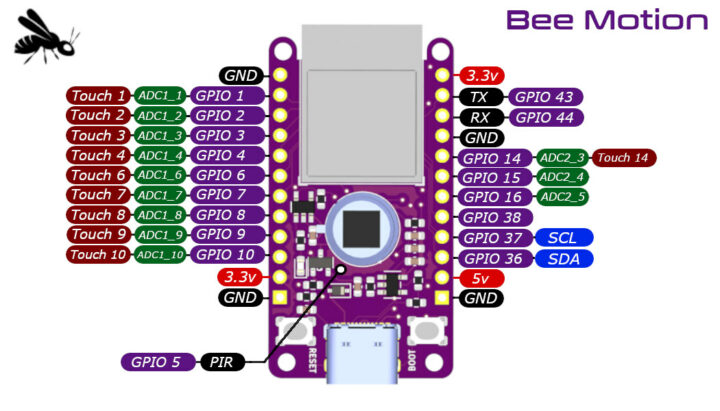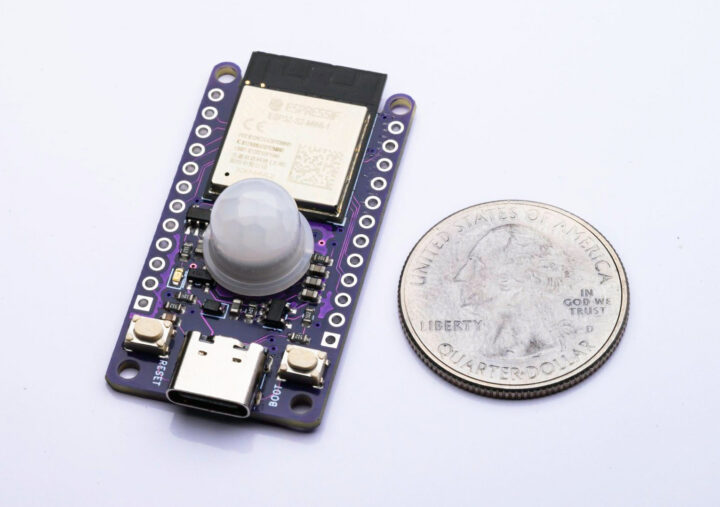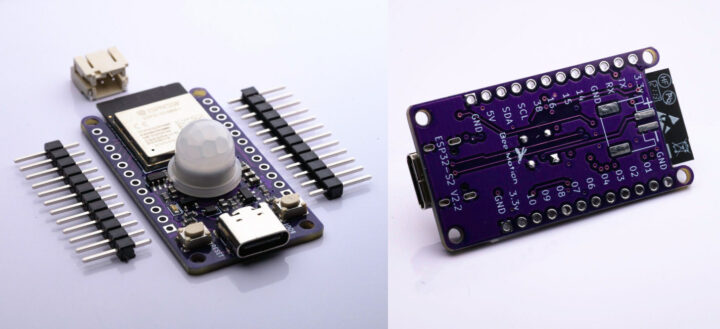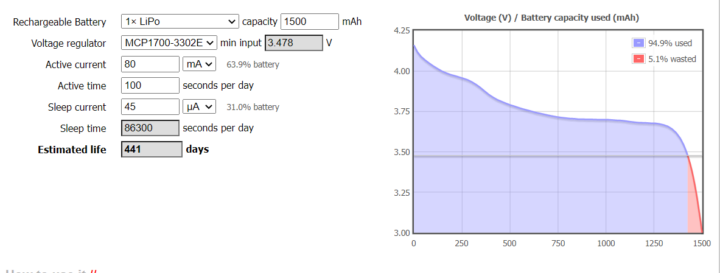Smart Bee Designs’ Bee Motion is an ESP32-S2 board with a PIR motion sensor, some GPIOs for expansion, and promising over a year of battery life under the right circumstances.
If the name “Bee Motion” rings a bell, it’s because we covered the Bee Motion Mini board last month with an ESP32-C3 processor and a PIR sensor, but no USB port for programming and no expansion ability. It was just designed to be used as a battery-powered wireless PIR motion sensor. The Bee Motion expands the use cases of the solution, although it only features WiFi connectivity, and loses Bluetooth LE.
Bee Motion specifications:
- Wireless module – Espressif ESP32-S2-MINI-1 module with Espressif ESP32-S2FH4 single-core 32-bit LX7 microcontroller @ up to 240 MHz, RISC-V ultra-low-power co-processor, 320 kB SRAM, 128kB ROM, 2.4 GHz WiFi 4 connectivity, 4MB flash, PCB antenna
- PIR sensor – Passive infrared motion sensor with dome lens, 5-meter range, 120 degrees FOV
- USB – 1x USB Type-C port for power and programming
- Expansion – 2x 12-pin headers with up to 17x GPIO, 13x ADC, touch support, I2C, UART, 5V, 3.3V, and GND
- Misc – Reset and Boot buttons, battery charging status LED
- Power Supply
- 5V DC input via USB-C port
- Support for LiPo batteries with 2-pin JST connector, charge controller
- 3.3V regulator
- Power consumption
- Deep sleep – 45 uA
- 80 mAH while on WiFi
- Dimensions – TBD

The Bee Motion ships with headers and a JST connector for a LiPo battery that users could solder to the board if needed. Resources can be found on Github with a 3D printed case, JPG schematics and PCB layout, and a simple Arduino Sketch to put the board in deep sleep mode, wake it up upon motion detection, and toggle a GPIO before getting back to deep sleep.
Smart Bee Designs also used a Power Profiler Kit to measure the power consumption with a similar sketch that also connects to WiFi (as I understand it), and assuming a 100-second active time per day, the board would last well over a year (441 days) with a 1,500 mAh battery.
The Bee Motion ESP32-S2 PIR motion board is sold on Tindie for $19.99 + shipping.

Jean-Luc started CNX Software in 2010 as a part-time endeavor, before quitting his job as a software engineering manager, and starting to write daily news, and reviews full time later in 2011.
Support CNX Software! Donate via cryptocurrencies, become a Patron on Patreon, or purchase goods on Amazon or Aliexpress







